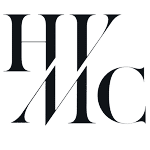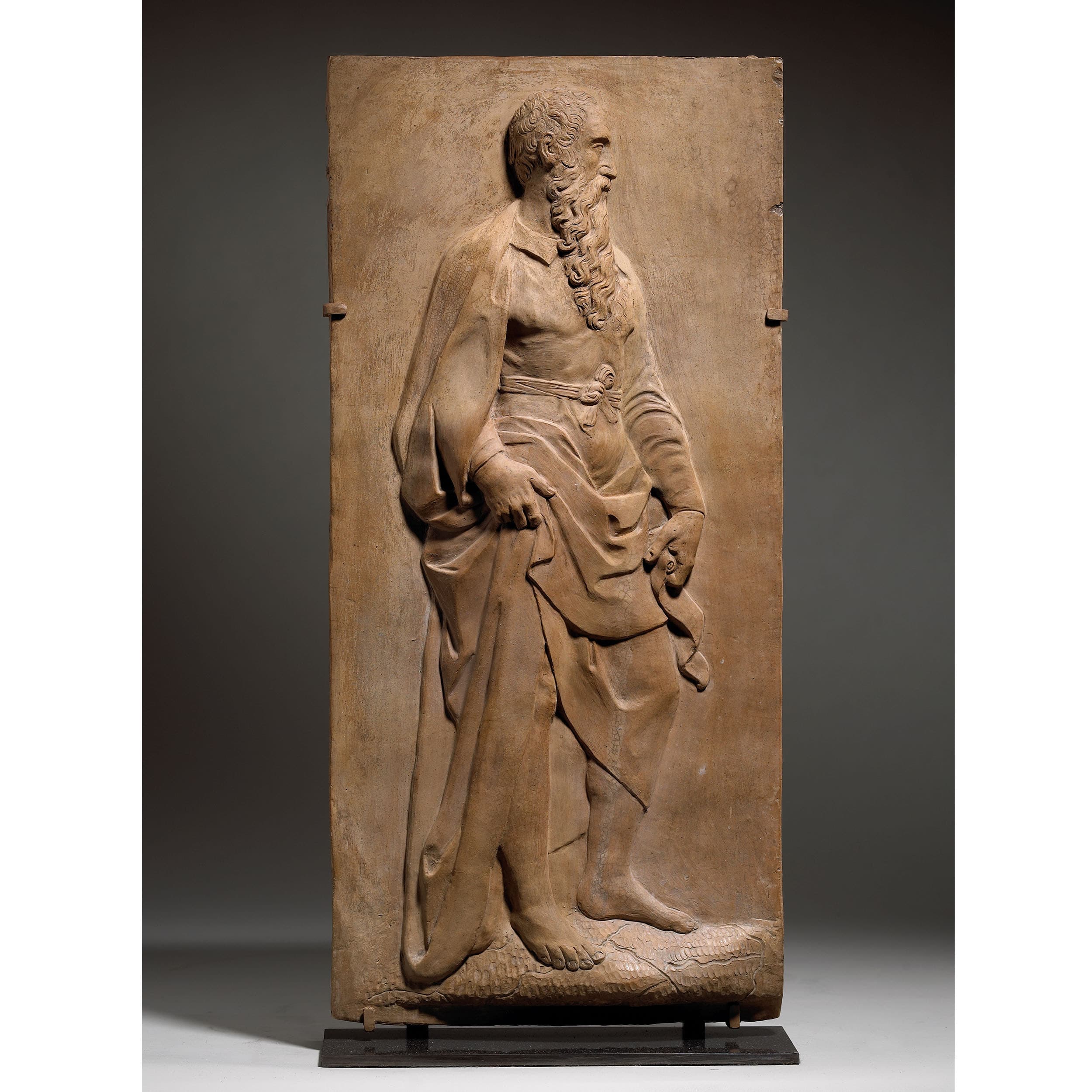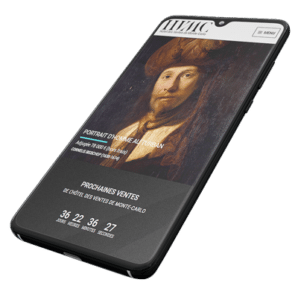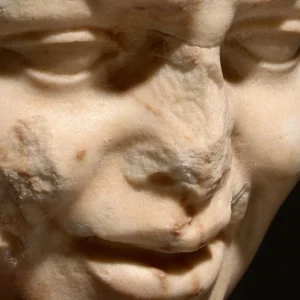AUTOPORTRAIT
Deuxième moitié du XVIe siècle
Terracotta
Hauteur : 54 cm
Sculpté en bas-relief sur une large plaque rectangulaire, l’artiste
se présente sous les traits d’un prophète — vêtu d’une longue
robe et d’un manteau qu’il relève de ses mains.
Dans la main droite il tient un parchemin. Tourné vers la droite,
le regard au loin. Représenté avec sa longue barbe bouclée, ce profil rappelle un bas-relief en marbre figurant l’autoportrait du sculpteur en prophète (fig.1), conservé au Musée du Bargello de Florence.
Baccio Bandinelli (1493-1560), est sculpteur maniériste florentin
dont les œuvres influencées par Michel-Ange ont été favorisées
par les Médicis dans le deuxième quart du XVIe siècle.
Bandinelli a été formé comme orfèvre par son père, Michelangelo
di Viviani de Bandini, qui était parrainé par la famille Médicis.
Montrant une prédilection marquée pour la sculpture, il travaille
sous la direction du sculpteur Giovanni Francesco Rustici et
devient l’un des principaux artistes de la cour des Médicis,
grands-ducs de Toscane. Il fonda une académie d’artistes au
Vatican (1531) et une à Florence (vers 1550).
BACCIO BANDINELLI (1493?-1560), attributed to
Self-portrait
Terracotta
H. 54 cm
Carved in low relief on a large rectangular plaque, the artist presents
himself as a prophet — wearing a long dress and a folded coat.
In his right hand he holds a parchment. Turned to the right,
gazing into the distance.
Represented with his long curly beard, this profile refers to a
marble low relief depicting the self-portrait of the sculptor as a
prophet (fig. 1), in the Bargello Museum in Florence.
Baccio Bandinelli (1493-1560), is a Florentine Mannerist sculptor
whose works influenced by Michelangelo were favored by the
Medici in the second quarter of the sixteenth century. Bandinelli
was trained as a goldsmith by his father, Michelangelo di Viviani
de Bandini, who was sponsored by the Medici family. Showing a
marked predilection for sculpture, he works under the direction
of sculptor Giovanni Francesco Rustici and became one of the
main artists of the court of the Medici, grand dukes of Tuscany.
He founded an academy of artists in the Vatican (1531) and one
in Florence (around 1550).
Description complète
